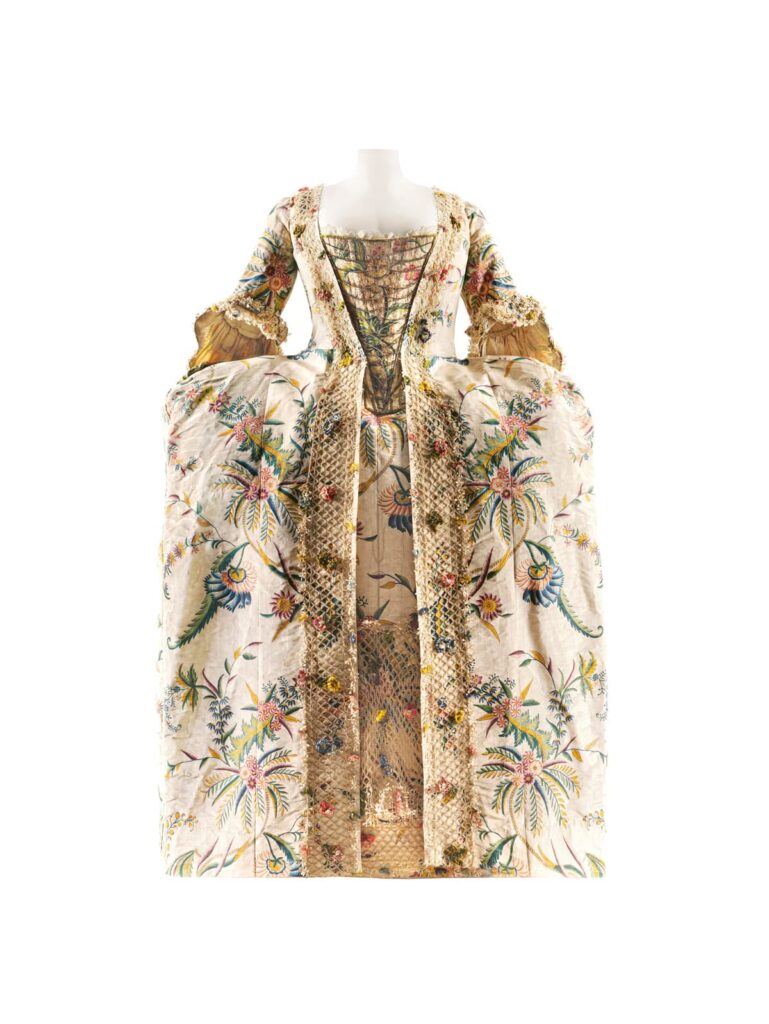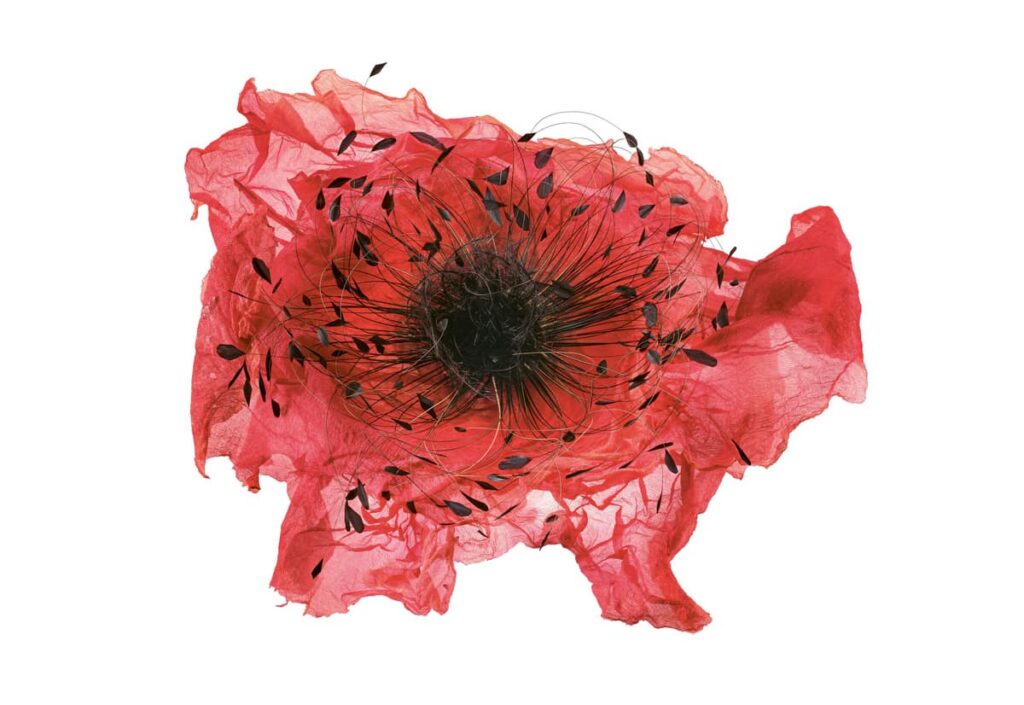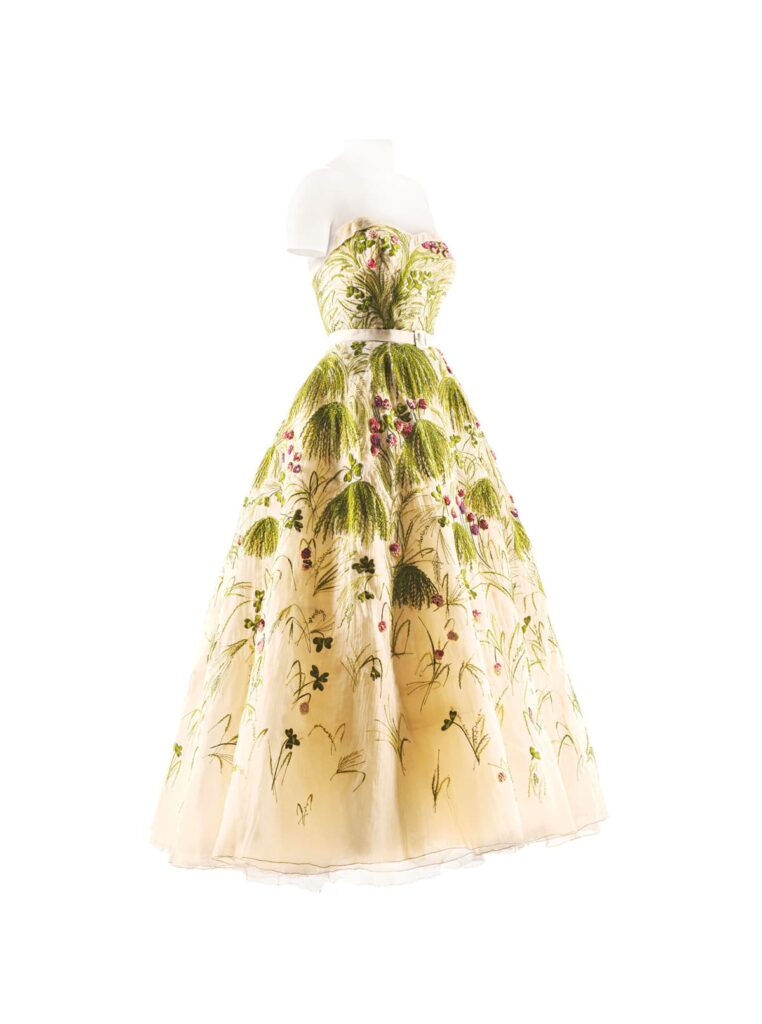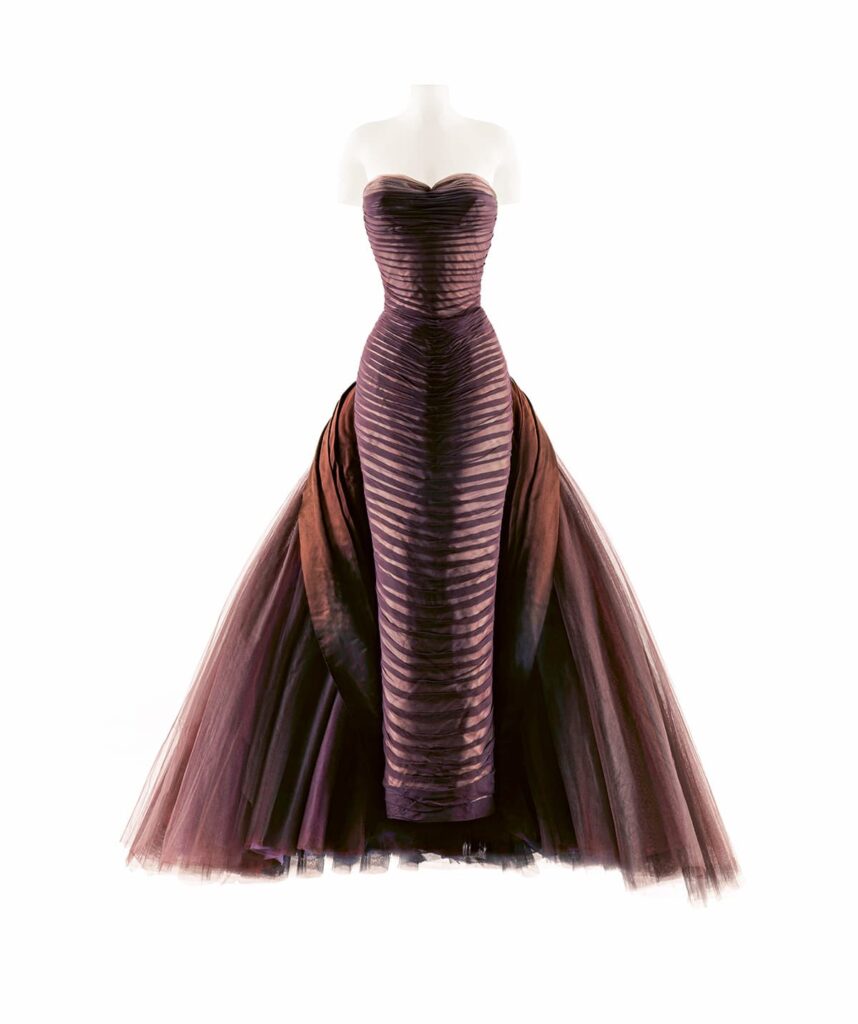
“Sleeping Beauties: Fashion Reawakening,” at The Metropolitan Museum of Art’s Costume Institute through Sept. 2, is an exhibit with two, often competing themes. The first is the fragility of fashion, seen through garments that lie in state like the fairy-tale princess and are designed to be reawakened through the sensory experiences the exhibit provides.
The second, related theme is the influence of the garden on fashion, with the cyclical nature of the garden as a metaphor for the vulnerability of clothing, culture and indeed all life. (That aspect of the show – along with The Met Gala held on the first Monday in May, as The Costume Institute Gala always is – was inspired by J.G. Ballard’s short story “The Garden of Time.”)

The viewer wanders through crowded, serpentine, one-way galleries, straining to look at objects, listen to related narration, sniff walls with tubes that contain the scents of garment molecules and touch fabric samples – the only scent not involved is taste – all while trying to read label copy that for the most part is confined to the bottom of display cases. So exhibitgoers will be entirely forgiven for abandoning the layered upon layered Sleeping Beauty theme and instead feasting on historical designs that capture the lush history of the garden in fashion, beginning with an elegant, florally embroidered 17th-century British waistcoat and equally elegant, florally embroidered 18th-century robes à la française and à la anglaise.

Some 200 years later, Christian Dior would introduce the postwar New Look, feminine and flirty and well-represented in the show by the strapless, cinch-waist, belted “May” ball gown, with its cascading purplish red clovers and greenery, from the designer’s spring/summer 1953 “Tulipe” line. It’s one of many swoon-worthy objects in a show that includes the “Irises” jacket from Yves Saint Laurent’s spring/summer 1988 collection, inspired by an 1889 Vincent van Gogh painting; a light red, glazed silk chiffon 1992 Jasper Conran/Philip Tracy hat with black coq feathers, burned and stripped into the form of a poppy; and a pair of 1955 Charles James butterfly gowns, form-fitting, strapless affairs with trains, made of cream silk satin overlaid with brown silk chiffon and light brown nylon tulle, brown silk satin and polychrome nylon tulle.
The exhibit ends with its showstopper – the 1930 gown designed by Callot Soeurs for New York socialite Natalie Potter’s wedding to financier William Conkling Ladd. The sleek gown – made of a blend of silk and cellulose acetate, an inexpensive alternative to silk – had an over-blouse that originally had a cluster of white artificial carnations falling over the left hip.

Like the Broadway shows and movies of the period, the gown flew in the face of the Great Depression, with a theatrical, cathedral-length train featuring interlocking scallops that evoked ocean waves and the concentric circles of seashells. In the exhibit, that train fans out down a staircase.
In such moments, “Sleeping Beauties” truly reawakens.
Tags: The Metropolitan Museum of Art, The Costume Institute, Natalie Potter, William Conkling Ladd, Callot Soeurs, Charles James, Jasper Conran, Philip Tracy, J.G. Ballard, “The Garden of Time,” Christian Dior, robe à la anglaise, robe à la française,
